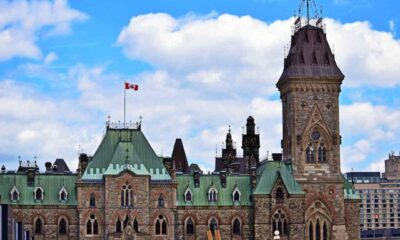Life in Canada
Canada Set a Record-High Population Growth Through Immigration in 2022

Recent statistics from Statistics Canada indicate that there are more than 39.5 million people living in the nation as of now (as of March 1, 2023). This indicates that the population of Canada increased by over a million people in a single year for the first time in history.
The country experienced its highest population growth rate in 65 years in 2022, at +2.7% (up from +3.3% in 1957). This occurs during a time when Canada’s population increased by a record-breaking 1,050,110 individuals between January 1 of 2022 and January 1 of 2023.
Canada Set Record-High Population Growth in 2022
Temporary immigration accounted for the majority of Canada’s population growth in 2022, which was a net increase of about 607,782 non-permanent residents. Another single-year record high for Canada is the 600,000+ increase in temporary residents for 2022. Canada also broke a previous record in 2022 for the number of immigrants it accepted in a calendar year.
Clearly, the Government of Canada made a deliberate attempt to use immigration as a tool to alleviate the national labour shortages, which resulted in both of these single-year records for overall immigration and non-permanent residents. In addition, the government of Canada intends to further increase immigration over the next three years, with total yearly immigration goals as high as 500,000 in 2025, according to the most recent Immigration Levels Plan for 2023–2025.
An Overview of Immigration Contribution to Canada’s 2022 Population Growth
The following immigration groups led to population growth in Canada. These groups include permanent residents, international students, and foreign skilled workers.
Permanent Residents
According to statistics from Immigration, Refugees and Citizenship Canada (IRCC), more than 437,000 new permanent residents (PRs) from more than 190 countries entered Canada in 2022. This number reflects a nearly 8% increase from 2021 while exceeding the goal outlined in the Immigration Levels Plan for 2022–2024 – over 431,000. The statistics show that, in 2022, 58% of all PRs entered Canada via economic immigration programs.
International Students
In 2017, 184 nations sent 551,405 new foreign students to Canada. The top 3 nations from which new foreign students came to Canada in 2022 were as follows:
- A total of 226,450 from India
- The People’s Republic of China sent 52,165 international students
- Philippines sent 23,380
Last year, the province of Ontario welcomed 411,000 students. Second, on this ranking was British Columbia – 164,000 and Quebec rounded out the top three with 93,000 international students.
Foreign Skilled Workers
In Canada, a record number of 608,420 work permits went into force in 2022. According to this number, nearly 200,000 more work licenses were issued in 2018 than in 2021. By analyzing that number, it becomes clear that the International Mobility Program (IMP) was the main route taken by the majority of work permit holders who entered Canada in 2022 – 77%, 472,070 permit holders. The Temporary Foreign Worker Program (TFWP) was used to issue the final 136,350 permits.
Population Growth in Canada in Q4 2022
According to Statistics Canada, the fourth quarter of 2022 saw Canada’s population grow at its highest pace since 1956 (+0.7%). Population growth in Q4 of 2017 was almost entirely (97.7%) attributable to foreign migration, which is consistent with overall trends in 2022.






















